Introduction
Caoimhes’ Mindful Pause emerged a longing to offer a contribution to Ireland’s culture, ecology, and community. That call came when I first learned that the Ash Tree – sacred and storied by our ancestors as a ‘Noble of the Wood’ – is facing global endangerment as a species.
The stick we use to play Ireland’s prominent native sporting games of hurling and camogie is the hurley.
The hurley, carved from Ash, is more than a sporting tool. It is a living symbol of who we are — of our games, our land, and the generations who have played our native gaelic games, here and across the world. For countless years — perhaps even since the time of Cú Chulainn — Ash has given us her body to craft these sticks. And through them, we’ve shaped our identity, our passion, our play.
I grew up in a family steeped in hurling tradition, and had the privilege to represent Cork ladies football in my youth.
When I first heard of Ash Tree’s decline, it struck a deep chord. The countless times I played with my team-mates on emerald green fields while holding that hurley in my hand – holding Ash – flooded back.
I felt an upwelling of gratitude and grief for this Tree who has given so much to me, to us all.
This poem is an offering — a pause to remember, a breath to appreciate, and a call to reawaken our reverence.
Ash is not a resource. She is a living presence amoung us — rooted in our sacred sites, sheltering our wildlife, and woven into the story of this land.
Under Brehon Law, our kin Ash Tree received the highest classification of tree species. It was deemed illegal at that time to cut down an Ash Tree without permission.
Our people beheld the Ash’ presence as being so inherently valuable that they protected the tree species.
Today, Ash Tree is one of our few remaining native trees, and is threatened as a species due to Ash Dieback Disease. Ash is also under further threat from the emerald ash borer beetle, and our human made climate change.
We in the GAA have been harvesting tens of thousands of Ash Trees [1] annually to make our huleys for many years — and with this gift comes a responsibility.
We are living through a time of climate emergency and mass species extinction — a defining moment that is calling communities and organisations across the globe to awaken, to restore balance, and to step into our ecological responsibilities with courage and care.
In recent years, the GAA has begun to rise to this call — leading the way with world-class sustainability efforts through initiatives like the Green Clubs Programme and the Ash Tree Society, offering a powerful example of how sport can serve the Earth as well as the community.
Our GAA has been rising to that call through pioneering exemplary world-class sustainability initiatives through the GAA’s Green Clubs Programme and the GAA’s Ash Tree Society – offering a powerful example of how sport can serve the Earth as well as the community.
Caoimhe’s Mindful Pause is a poetic pause — to recognise that real sustainability begins in the soul, and that restoring a living relationship of respect, balance and reciprocity in our relationship with Nature is a foundational principle for all real long-lasting sustainability initiatives.
The views I express are entirely my own. While I am a member of the GAA, I do not speak on behalf of the organisation.
Caoimhes Mindful Pause
It’s camogie final day in County Mayo.
The sun is shining, the players are rearing to go.
In the dressing room the home team have let out an almighty cheer!
Their captains pep talk was riveting for all to hear.
Caoimhe shares words of thanks from her heart,
To her managers and selectors – community volunteers who are a part
Of the living legacy of Ireland’s cultural games.
Now passing on the torch to her generation, with flames of passion lighting ablaze!
Caoimhe positions herself to ensure that she is last in line
To run out towards the pitch this time.
At the entrance gate, she takes a mindful pause
To honour ancient ways and natural laws.
Time stands still as she momentarily kneels down,
And places her right hand on hallowed ground.
Bowing her head to her heart she thanks Creator for loving her more every day,
And for giving her the gifts and health to play.
Caoimhe invokes the courage to give her absolute best,
And promises to do her all for her village in the West,
To give glory and delight to the eternal One!
She’s determined to play today with fierce grit, and fun!
Caoimhe caresses the soil with her hand,
And gives thanks to Mother Earth for so generously giving her body for land,
To enable us to play Ireland’s cultural games all these years
Even while so many of us have been nescient to her sentience, her ecocide… her cries, her tears.
Ériu hears Caoimhe’s compassion,
And in return blesses her with the strength of her mountains,
The courage of her streams,
And the wild freedom of her winds!
With hurley in hand, Caoimhe imagines us sourcing camán wood
In ways harmonious with “original instructions” [3] that Earth Protectors have always understood.
She prays that all in our one human family
May unite to re-plant native trees and regenerate Nature’s biodiversity.
Caoimhe stands and runs to shake hands with the centre back – (who now silently wishes she wasn’t assigned this marking role!)
For she senses that Caoimhe is filled with strength from the circle of life and the oneness of the whole!
The referee blows his whistle – it’s heard throughout North Mayos’ valleys and hills,
And so, the county camogie final game begins!
Our Irish ancestors referred to Ash Tree as a Noble of the Wood,
A living legend in Creations’ story – generous and good.
Now an endangered species, Creator invites us to remember our ancient role
As stewards of the Earth, and guardians of her sacred soul.
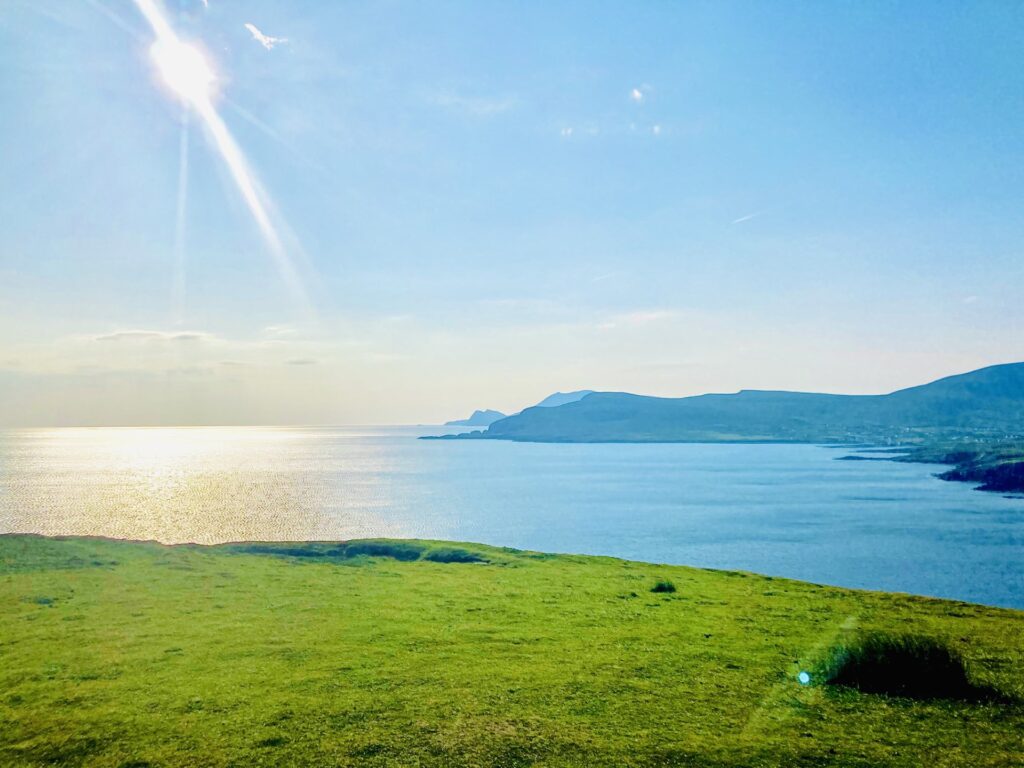
Poet Note (The Short Version)
In 2021 I shared Caoimhe’s Mindful Pause — alongside a set of vision slides — with leaders at GAA headquarters in Dublin. My hope was simple: to offer a creative way to present my vision for a native tree planting initiative that places a respect and appreciation for Ash Tree and the Earth at the centre. I extended an invitation for our GAA leaders to join me in bringing this vision to life together.
I’m deeply grateful that the GAA’s brilliant Green Clubs Programme welcomed this vision, and that funding from the Irish Department of Agriculture, which I proposed from the outset we apply for to fund the initiative, was secured. This funded the planting of 10,000 native trees into Irish soil.
These trees were a part of the GAA Green Clubs Programmes broaded initiative, planting and growing 100,000 native trees across the whole island of Ireland in the 2022-2023 tree planting seasons.
Throughout this process, I emphasised that in the GAA have been cutting down circa 50,000 Ash Trees [1] every year to make our huleys in Ireland for many years – which means we have a particular responsibility to the Ash Tree, and the Earth on account of this legacy that has been gifted to us.
Ash is now not only endangered by Ash disease and beetle — but by a wider imbalance in our human relationship with Nature.
I put forward a vision for two peacemaking initiatives that were designed to systemically build on the Green Clubs Programmes wide-ranging sustainability initiatives, and further support us as a community to restore peace and reciprocity in our relationship with Nature.
These initiatives also aligned with the United Nations Resolutions is “Harmony with Nature.”
This project, and this poem, are rooted in a vision of restoration and reciprocity. A call to act from love, not guilt. To let the values we hold dear — community, courage, respect — extend beyond the pitch and each other – and towards the Earth too.
At the heart of my vision is an invitation to us to bring forward our GAA values of respect forward in the context of the Earth by respecting the Ash Tree for her inherent being – rather than just as a resource for our utility.
At Connaught GAA Centre For Excellence I was given the opportunity to guide our Green Clubs community into initiating our first 1 minutes silence offered in thanksgiving to the Earth and Ash Tree in respect of Nature’s intrinsic value, and in appreciation for all the Earth gives us – the land for our GAA pitches, the hurleys and footballs we play with, the jerseys we wear, the food, water and nourishment to live and play.
A quiet offering, yes — but with real meaning.
I was also given the opportunity at Kerry GAA Centre for Excellence to guide us into offering the 100,000 trees gift to the Earth, a gesture to repair our relationship with Nature for having come out of balance and reciprocity – given the amount of Ash trees we cut down throughout the years with little soil replenishment in return until very recently.
I am thankful to everyone involved in helping to bring this vision to fruition. Nelson Mandela said “Sport has the power the change the world. It has the power to inspire, it has the power to unite.
Through the GAA’s Green Clubs Programme, we’ve glimpsed what’s possible: that sport, when aligned with ecological truth, can help restore balance in our world.
The GAA’s Green Clubs Programme is a shining example to all sporting organisations on the role sport can play to mobilise our communities in service to peacemaking, climate action, and a more sustainable future for the living Earth and our future generations.
I encourage our leaders in the GAA to continue to honour our organisation’s ecological responsibility to the Earth and to our future generations of children and wildlife, by inviting us to sufficiently replenish the soil this year, and every year going forward, in reciprocity for the trees we cut down annually to make our hurleys and create/extend our pitches.
It is illegal worldwide to replant Ash Trees on account of the way the disease spreads. I therefore also request our leaders to help protect healthy Ash Trees from being cut down as much as possible, in this time of real need for Ash as an endangered species. By keeping as many healthy Ash Trees standing as possible, we can identify individual which appear to survive exposure to the fungus, which can be used for breeding tolerant Ash trees in the future.
Ar scáth a chéile a mhaireann na daoine agus an domhain.
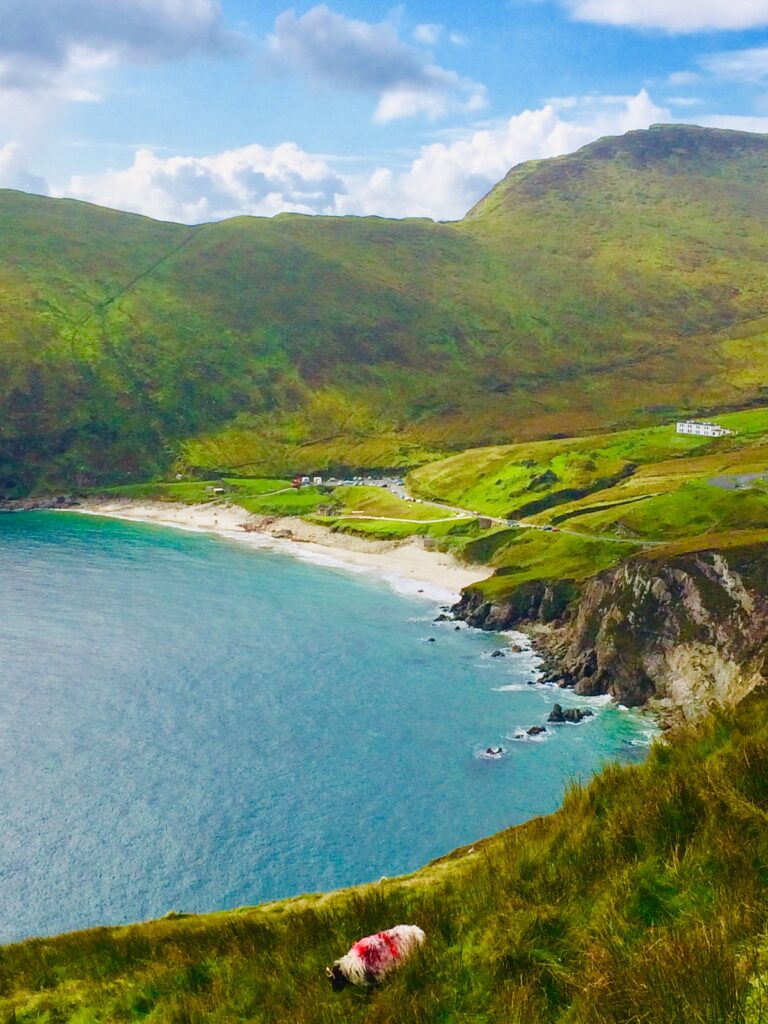
Poet Note (The Longer Version)
Thank you for reading Caoimhe’s Mindful Pause. In this extended poem note, I expand on the deeper messages and initiatives referenced in the shorter version.
Ash Tree: Noble of the Wood
Ash Tree holds a deeply rooted place in Ireland’s cultural, ecological, spiritual and mythological heritage.
One of the ancient bardic names for Ireland was Inis na bhFiodhadh – “Island of the Sacred Trees.” Among the five legendary trees said to guard the provinces of Ireland, three were Ash: Bile Tortan near Tara, Craeb Daithi in Farbill, and Bile Uisneg in Uisneach.
Ash is not only revered, but ecologically vital: Ash supports nearly 1,000 associated species, including 12 birds, 55 mammals, and 239 invertebrates. Ash is the sole food plant for many rare insects, mosses and lichens.
Today, Ash is one of our few remaining native trees — now severely endangered globally due to Ash Dieback Disease and under additional threat from the emerald ash borer beetle and human-driven climate change.
It has been illegal in many cases to replant Ash trees, given the way the disease spreads. The trees we’ve cut down over the years for our hurleys have mostly not been replaced — unless we act now to work with Nature to regenerate the soil and foster the conditions for Ash to possibly recover.
Harmony with Nature – Our Ecological Responsibility
We are living in a time of accelerating climate breakdown and mass species extinction. Around the world, more and more communities and organisations are awakening to an urgent call: to move from extractive mindsets toward regenerative ways of living and working with Nature.
Much of this shift is thanks to the courage of youth climate strikers, the guidance of climate scientists, the UN Sustainable Development Goals, and the countless earth protectors helping us remember a deeper truth — that we are part of the living Earth, not separate.
As a GAA member, I’ve been highlighting to our leadership that, given we have historically felled over 50,000 Ash Trees each year to make hurleys, we carry a particular ecological responsibility — not only to the Ash Tree but to the Earth itself, and to future generations of children and wildlife who will depend on healthy soil and thriving ecosystems.
This trust to the land calls for a shift from extraction – to reciprocity through soil replenishment.
Reciprocity through soil replenishment
Living true to this ecological responsibility means replenishing the soil each year, not only for the Ash Trees felled for hurley-making, but also for those lost in pitch development and wider infrastructure projects.
As a guiding principle, I propose we restore our living relationship with the Earth through a Five R’s of Sustainability I propose: Respect, Responsibility, Reconciliation, Reciprocity and Regeneration.
For every one tree we cut down, replenishing the soil with the equivalent of two to three trees would help us leave the land healthier for the next generation. Based on hurley-making alone, this would equate to replenishing the soil for the equivalent of 100,000 to 150,000 trees per year — not yet accounting for pitch development. Given that we uproot trees from other countries for the making of our hurleys – this planting could be aslo be done internationally.
However replenishment could include any combination of direct GAA-led native tree planting, biodiversity initiatives, and the vital ongoing work of the GAA’s Ash Tree Society in partnership with Ash tree propagation experts.
The GAA’s existing sustainability initiatives through the Ash Tree Society and Green Clubs Programme have been going a very real way to restore so much of the balance in recent years.
I venture forward to share my messages here, as someone who is tremendously supportive of all our GAA’s brilliant existing sustainability initiatives, because I believe this emphasis on right relationship, thanksgiving and soil reciprocity is needed for us to fully live ecological responsibilities now, and long-term into the future.
Now is the time to act — in harmony with Nature, and in trust for those yet to come.
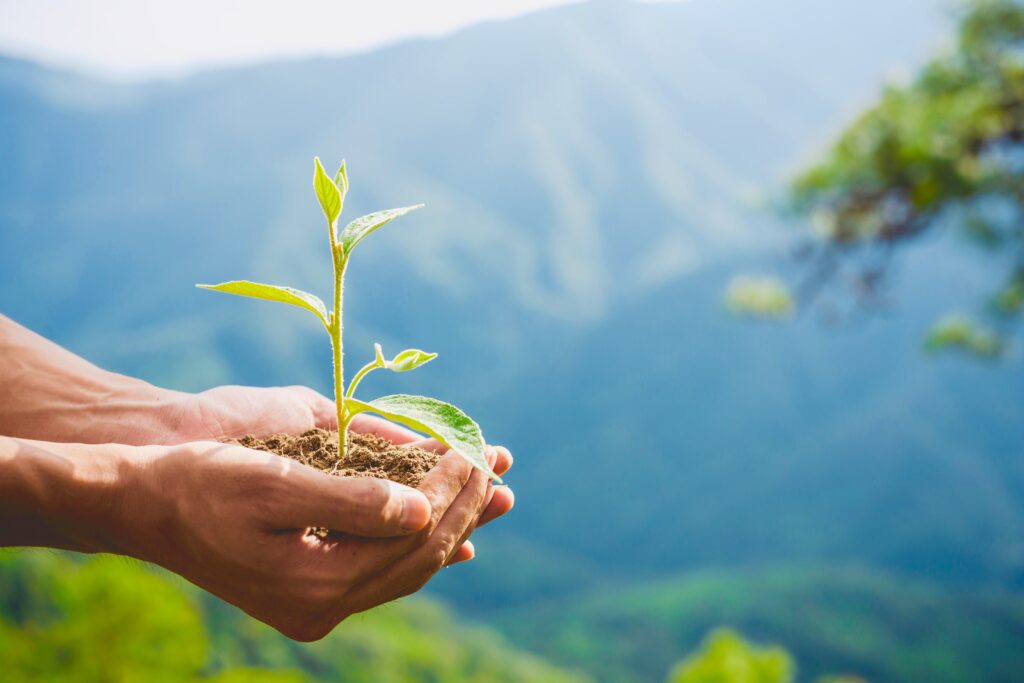
The First Peacemaking Initiative – Respect for Nature
Throughout this initiative I’ve been offering an invitation to us to consider further bringing our GAA value of respect forward into action in the context of the Earth.
In May 2021, I invited our GAA leaders to consider offering an annual 1 minute silence at the first or final games held in Croke Park every year – in appreciation for the Earth for her inherent value, and for all the resources she to us to live, work, and play our gaelic games.
I was delighted to be invited to lead participants and GAA partners into a 1 minutes silence in thanksgiving to the Earth at the launch of the first GAA Green Clubs Programme gathering in Connacht Centre for Excellence in March 2022.
This was the first time a thanksgiving was offered to the Earth as a GAA community, and I truly hope it is the first of many.
In March 2023 I was grateful to lead us into our second community thanksgiving at Kerry Centre of Excellence. At the time of writing this poet note, the Green Clubs Programme is now looking to roll out a community thanksgiving with this focus annually in each of our local participating tree planting club communities as a way to bring forward our GAA value of respect for Nature.
The Second Peacemaking Initiative – Repairing Our Relationship with Nature
In March 2023, at the Kerry Centre of Excellence, I invited our GAA Green Clubs community to dedicate 100,000 native trees from recent planting seasons as an offering to help repair our relationship with the Earth.
This act of ecological restoration marked a shared commitment to return to balance with Nature. Going forward, ongoing soil replenishment and regeneration efforts will be essential to honouring and sustaining this relationship.
As we open our hearts to feel our belonging to the land, we instinctually feel moved to protect her species and steward her ecology.
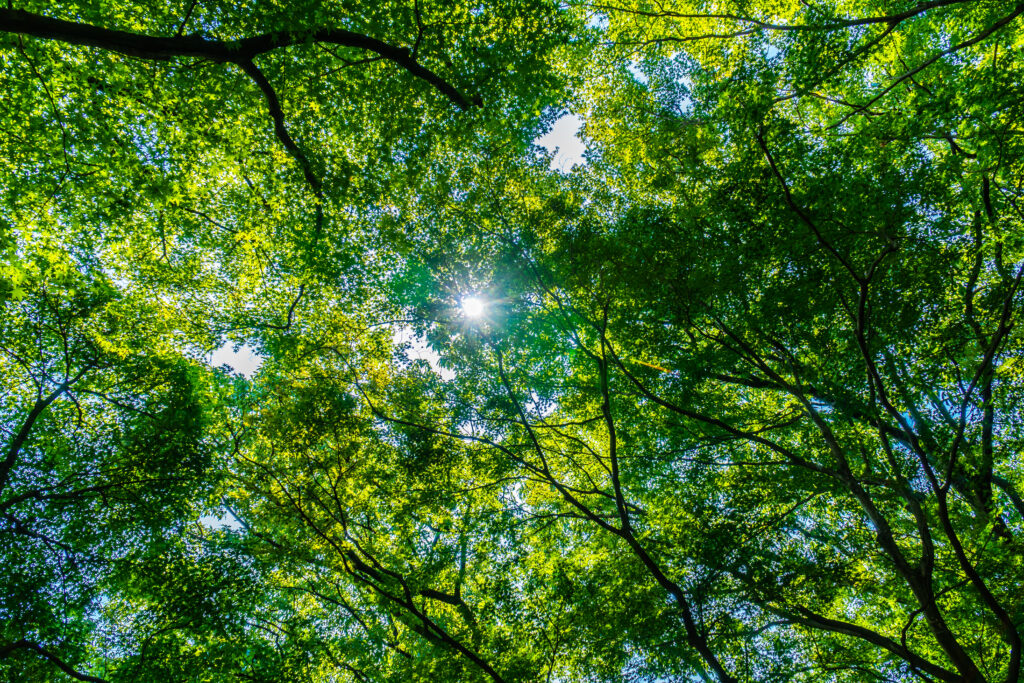
The Future of the Hurley & Our Ecological Responsibility to Nature
In response to the Earth’s needs, I invite us to reflect on the most noble path forward for our hurley-making tradition — one that honours not just our sporting legacy, but the wider web of life.
At this time of ecological crisis, we must consider a solution that is truly sustainable — for the Earth, her biodiversity, and for the communities whose livelihoods depend on hurley making. This includes being open to new materials, new approaches, and united conversations.
While I don’t claim to have the definitive answer, one regenerative option I’ve shared with the GAA is to explore using wood from the millions of Ash Trees across Europe being felled due to Ash Dieback disease. If viable, this could allow us to recycle wood that would otherwise be burned — a meaningful act of stewardship.
Another idea is exploring hybrid hurleys, perhaps incorporating reclaimed materials like ocean plastics.
Whatever path we choose, it’s vital we conscientiously source our wood/resources as close to home as possible to save on unnecessary carbon emissions from long distance international transportation, which is a significant polluter.
Alongside this, I deeply support the ongoing work of the GAA’s Ash Tree Society in helping breed resistant Ash Trees. Scientists have advised that targeted genetic testing could significantly accelerate this effort. With proper support, the GAA can continue to play a key role in helping Ash Tree populations recover and thrive.
While millions of Ash Trees are predicted to be felled in the coming years, scientific research also shows that a minority are showing signs of resistance.
I hope the vital and beautiful work of the GAA’s Ash Tree Society is granted more support in the years ahead to collect Ash Tree populations that show resistance to ash dieback, and then plant these trees in Ireland and elsewhere.
Scientists have advised me that we need to encourage the propagation and planting of these resistant trees, and crosses amoungst them, to play our part to serve the Ash Tree with a chance of survival. They say this work can be more efficient if we use genetic tests, which allows us to bring together trees with different sorts of resistance, to make more resistant trees.
Respect for Trees
My invitation is that the trees we are cutting down to make our hurleys in the meantime may be approached with respect for their intrinsic value and presence.
With the climate emergency and challenges present today, the solution lies in restoring and maintaining a respectful and caring relationship for Nature.
A friend of mine who manages an organic food growing garden in London, told me how they needed to cut down one of their oak trees.
Before they did so, many of the workers and volunteers at the community garden gathered together to pay their respect to this Oak, and to offer their appreciation for the the tree, and for the thousands of species that this tree had sustained throughout her life.
This honouring of a relationship in my view is a good role model of the care that can be brought into this process.
Many of our ancestors before us have known for millennia how to live in harmony with the Earth. They approached Nature with thanksgiving and reverence, and they replenished the soil annually for any resources they utilised.
“They lived in a world of kinship on many levels: not masters, not the dominant species, but part of a living tapestry – just one species amoung many – where the hunter asked the spirit of the animal for permission to hunt, and the gatherer for the plant’s blessing to harvest. Here there was no hierarchy but an interdependent world both physical and spirit, all part of one community that could communicate through dance and dream, song and prayer.” Llewellyn Vaughan Lee. [4]
It’s only in very recent years – less than a blink of an eye, that a worldview of disconnection spread, and since then we collectively forgot these ways of being in right relationship with the land that nourished life for centuries. As this collective societal disconnection occurred just so recently – it can easily be restored on an individual and community level.
We are not separate from nature but part of a vast, interconnected web of life. The future of our shared home depends on how well we remember and restore that truth.
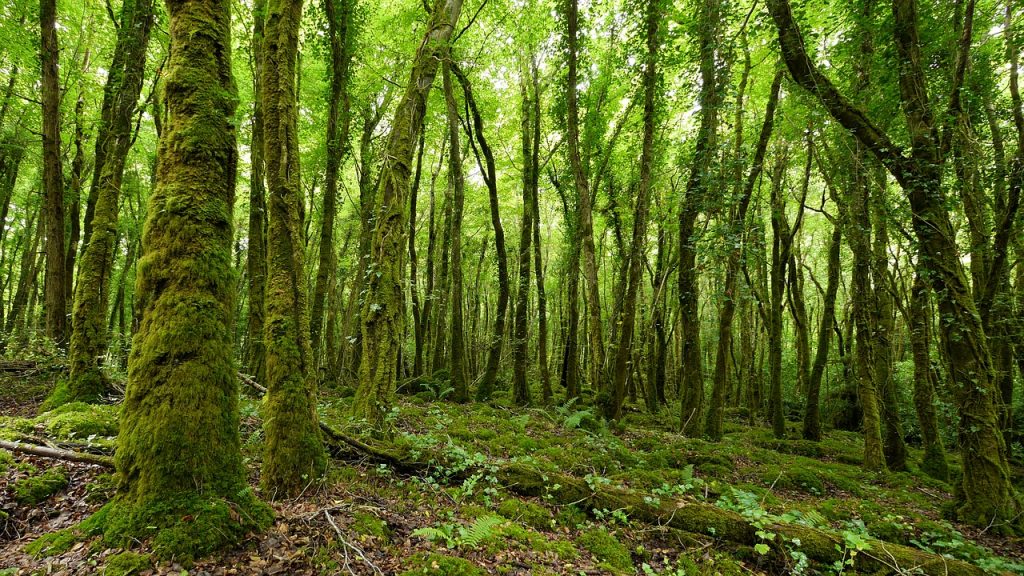
Planting and Growing Trees
What’s most valuable in this project is not just the planting of trees into Ireland’s soil – it’s the love and care that goes into the planting and growing of the trees.
Just like children need support to nurture their growth, trees also need care during their early development to support them to survive and thrive.
A willingness to listen to what planting trees asks of us opens up a quality of humility that allows us to enter into a conscious relationship as we work with Nature in the process of planting and growing trees.
Prior to the launch of the tree planting project, I invited the Green Clubs Programme to create an educational resource for clubs on Tree Health and Wellness at pre-planting, during planting, and post-planting stages, to ensure the long-term development of the trees.
Every local community has knowledgeable organic horticulturists, garden centres, and tree planting experts. I encourage local GAA sporting communities to invite them to guide you in your tree planting initiatives if needed.
Invitation to Unite Ireland’s Culture for Earth Stewardship
As one Irish culture, there’s a beautiful opportunity for us to unite in support of the well-being of Ireland’s ecology, and in appreciation for a living symbol of Irish culture who has given so much to Irish people all around the world.
On the tree planting day itself, some GAA communities may find it very meaningful to invite their local musicians, youth groups, tidy towns groups, councillors, community groups, schools, historians, climate action groups, myth and story-tellers, Irish dancers, elders, diverse local multicultural groups, and spiritual/faith groups to contribute to the tree planting day, either in person or on zoom, covid permitting.
I’m also envisioning, with others, that some of us may unite together to co-create a bi-lingual Irish and English teachers resource for primary and secondary schools, gael scoils, and special needs schools on earth stewardship for youth leaders, while particularly highlighting an appreciation for our inter-belonging with the Earth, and an awareness of Ash Trees’ very unique place in Ireland’s rich heritage.
My Story
“Real change will only happen when we fall in love with the planet.” Thich Naht Hanh, a pioneer of mindfulness in the West, and Nobel Peace Prize nominee [5.]
In my youth, the GAA was my great passion. I played hurling and football with the boys in Aghada, as there was no girls’ team at the time. Later, I joined the camogie team in Killeagh — 25km from home — relying on lifts to play the game I loved.
When I first heard of Ash Trees endangered species condition, my heart filled with love and grief for Ash Tree – a natural response when one has made a heart connection with Nature.
Many people, especially our young people, feel grief as they become aware of the reality of the climate emergency and species loss taking place on our planet. It is natural to feel heart-break as we bear witness to the ecological devastation and species extinction that we see taking place on our beautiful planet, our home.
As I nurtured the seeds of care for Ash Tree in my heart over the years, I’ve been fortunate to have shared many conversations with some world renowned peace activists, spiritual and faith leaders, indigenous elders, scientists, eco-lawyers, eco-psychologists, ecological conservation charity ceo’s, ash tree specialists, environment protectors, social change-makers, wildlife experts, life coaches, and sustainability experts, which continue to inspire my work.
To young people facing eco-grief: this pain can be transformed into trust, active hope, and meaningful community action. You’re not alone. I offer support and resources in my blog here: https://lyndamorrissey.com/climate-resources/
Iner-Being with Earth
An essential awareness of our inter-being and belonging with the Earth rests at the core of my vision for this project.
“The Earth is everywhere. You may be used to thinking about the Earth as only the ground beneath your feet. But the water, the sea, the sky, and everything around us, comes from the Earth. Everything outside us and everything inside us comes from the Earth….” “…The Earth is not just the environment we live in. We are the Earth and we are always carrying her within us.” [5.]
Recent emerges in science affirm that we are part of Nature. The core of our existence is inter-related with every other living being and species around the world. As a contemplative I know that when we can learn how to attune ourselves to the underlying harmony principle of relatedness that exists at the heart of life which allows the living world to unfold in the best possible way.
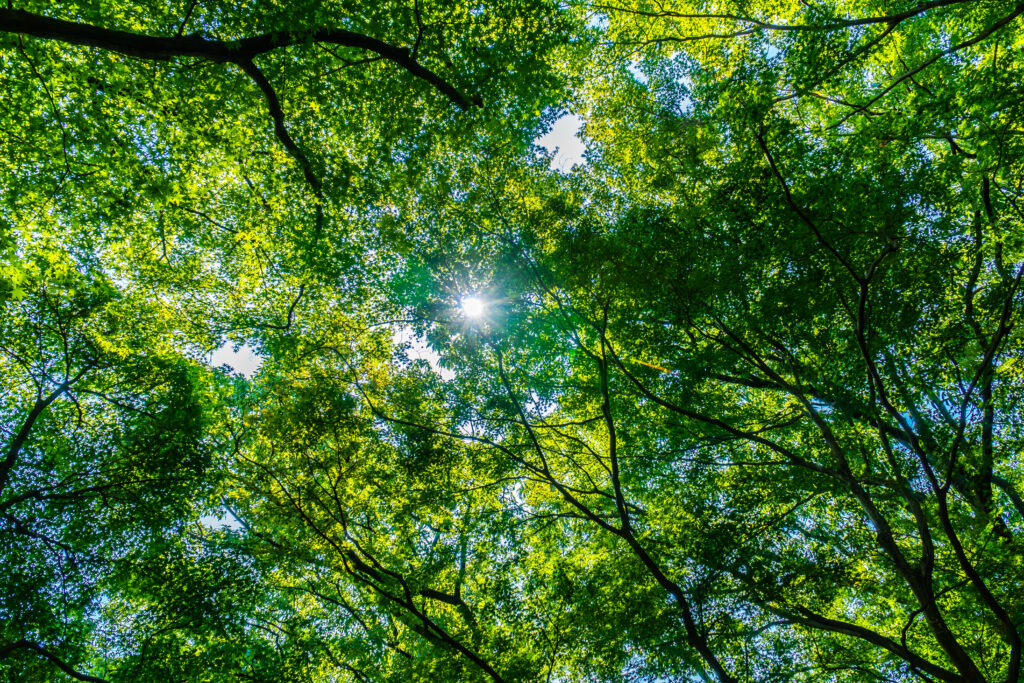
The views I share are my own. I’m a proud member of the GAA, but I don’t speak on behalf of the GAA.
I offer an inclusive interspiritual vision here in my personal blog because I believe that remembering the sacredness of ourselves, each other, and the land, is the foundation for longlasting ecological sustainability and regeneration.
Beneath the visible crises of climate change, species extinction, war, mental health struggles, and societal division is an inner spiritual crisis — one of disconnection from the Source of meaning, and from our place in the web of life.
We have forgotten that we are in a relationship with the living Earth. We have forgotten that we are a part of Nature – at one with the wider earth community. We have forgotten that we are just one species – amoung many.
Our hearts are instinctually moved to respect, appreciate and protect what we love and what we behold as sacred.
Denying the sacred dimension of life might be normalised in our collective society today, but doing so still comes at a huge cost.
It has real destructive personal, health and societal consequences which we can see playing out all around us in our world.
As we are still living in a moment in time when our societal worldview is still awakening from false ideas of separation and disconnection, towards a reverence for life’s living unity and interdependance, I appreciate the real fruits of my vision may be ready to emerge more fully into our mainstream culture in many of our childrens or grandchildrens lifetime, rather than today.
I’ve still decided to venture forward to share my vision as a form of seed planting, in the trust that one day when the timing is right, my little seed vision may unite with many other seed visions, and be implemented by future generations of Earth stewards in our cultural games community.
I plant this vision as a seed — may future generations of Earth stewards bring it into bloom.
As for today, I’m persuaded that if we may be willing to unite our love and passion for our games, for Nature, and for a healthy future for our children… and place that love into our tree planting initiatives, then we as a united GAA community will be making a very real and valuable contribution.
As a collective human society, we cannot stop all of the challenging consequences that are coming our way according to the science on the climate emergency. We have a brief window of opportunity now to unite together at a grass root level, decide the values we are going to live by in the challenging times ahead, and help to build resiliency in our local communities and ecologies.
Every community in Ireland, and around the world, needs to have community soil regeneration, agroecology, and Earth care biodiversity initiatives if we are to truly adapt and make our soil as resilient as possible for the benefit of all species, including us humans. Resource distribution and climate justice needs to be central to this work.
The many GAA Green Clubs Programme sustainability initiatives are already uniting and mobilising communities together to take local action when it is needed – role modelling what is needed for the present moment, and the times ahead.
I give great thanks to our leaders in the GAA Green Clubs Programme, and the GAA Ash Tree Society for pioneering so many brilliant sustainability and climate action initiatives. I feel so grateful for everyone who are uniting together and participating in the tree planting and growing initiatives in our communities.
Final Reflection
“Knowing that you love the earth changes you, activates you to defend and protect and celebrate. But when you feel the earth loves you in return, that feeling transforms the relationship from a one-way street into a sacred bond.” Robin Wall Kimmerer [6].
I thank you for your kind attention. I also welcome and invite your support. Ar scáth a chéile a mhaireann na daoine agus an domhain.
Is mise le meas
Lynda Ní Mhuirgheasa
The African proverb rightly says “It takes a village…”
Many individuals have directly or indirectly played role in my journey as an advocate for Ash Tree and for systemic sustainability.
I feel very grateful to have had the privilege to learn directly from a diverse range of spiritual, faith and indigenous wisdom leaders over the years, whose work continues to inspire my heart.
Particularly the ‘Soil, Soul, Society’ philosophy of Gandhian activist Satish Kumar; ‘The Work That Reconnects‘ founded by the Buddhist environmental activist by Joanna Macy; ‘A 4 Point Plan’ written by the Sufi teacher Llewelyn Vaughan-Lee, PhD; along with conversations I shared with a Native American Elder, Tiokasin Ghosthorse of the Cheyenne River Lakota Nation of South Dakota; and Michael Meade, Founder of Mosaic Voices and an early pioneering voice in the Mens Movement.
An additional heartfelt gratitude to all of the Ash Tree specialists, eco-lawyers, scientists, politicians, evolutionary biologists, mythologists, story-tellers, musicians, sportspeople, environmental activists, artists, and friends who listened to my heart’s longings, especially: Johnny Broderick, MEP Seán Kelly, Vincent Morrissey, Julia Butterfly-Hill, Jenny Cox, Dr. Mark McMullan, Professor Chris Baker, Polly Higgins (peace and power be with her spirit), Professor Richard Buggs, Clare Martin, Matt Smith, and all my family and friends. My heartfelt thanks to my Elder, Ash Tree.
End Notes:
[1] Quoted from the GAA’s website on 3rd March 2016: www.gaa.ie/hurling/news/video-ash-dieback-and-the-fine-art-hurley-making
[2] “Ar scáth a chéile a mhaireann na daoine” is an ancient Irish saying that means: we are stronger together; we live in each others shadow; we are interdependent and interconnected with each other. I have personally added “agus an domhain” to this beautiful Irish phrase, to include an awareness of our interbeing with the living Earth. We are bonded together in kinship and love.
[3] “Original Instructions’ of First Nation indigenous people is a term that points to orally transmitted guiding instructions that orientate our heart towards inwardly and outwardly living in harmony, peace and a reciprocal right relationship with Creator, Earth, each other, all our seen and unseen relatives, past and future generations in our daily lives. There are naturally very real consequences when we individually and collectively ignore guidelines for peaceful, harmonious and respectful relations, as we see so evidently now in the climate emergency.
[4] Quoted with permission, Emergence Magazine, May 20th 2021 edition. Quote by Llewellyn Vaughan-Lee, PhD, Where the Horses Sing. Llewellyn Vaughan-Lee is the author of many books, including on the theme of Spiritual Ecology.
[5] Quoted from Thich Naht Hahn’s website: https://plumvillage.app/love-letter-to-the-earth/
[6] Robin Wall Kimmerer is the author of the New York Times Bestseller, Braiding Sweetgrass.
Credits:
‘Caoimhe’s Mindful Pause’ Poem and Poem Note © by Lynda Morrissey. All rights reserved

